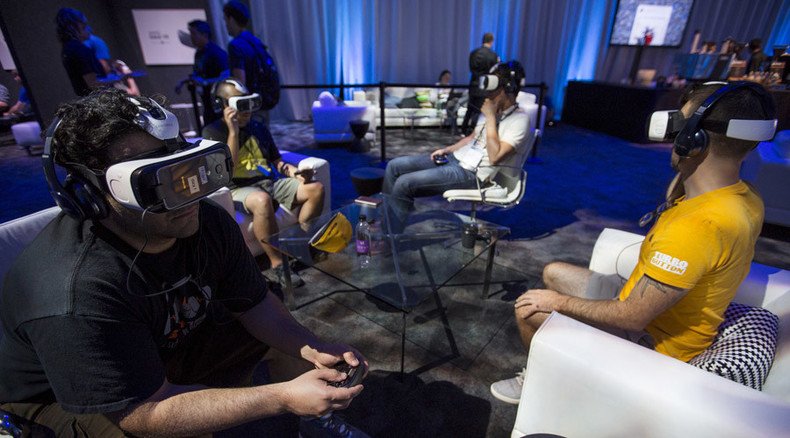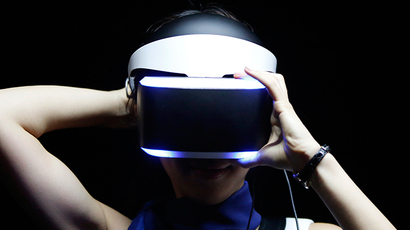Doctors warn of 'cybersickness' epidemic from gadgets, virtual reality rigs

Smartphones and computer-generated graphics are increasingly triggering a digital motion sickness in users, researchers say. The woozy or nauseous feeling dubbed "cybersickness" can affect even those immune to regular motion sickness.
Cybersickness is caused by seeing movements, such as a rapid-pace scene of an action film, without actually feeling those motions. This maladjustment runs counter to traditional motion sickness, when one feels movement in the body and inner ear, but does not see it ‒ for example, on the deck of a ship sailing at sea. Fixating on the horizon can often reconcile the mismatch.
“Your sense of balance is different than other senses in that it has lots of inputs,” said Steven Rauch, medical director of the Massachusetts Eye and Ear Balance and Vestibular Center and professor of otolaryngology at Harvard Medical School, according to New York Times.
“When those inputs don’t agree, that’s when you feel dizziness and nausea,” Rauch said.
Is anyone really surprised by this?
Feeling Woozy? It May Be #CyberSicknesshttps://t.co/8FOO3RE6GX via @nytimeswell
— John Wellner (@johnrwellner) November 15, 2015Studies have found that digital motion sickness can impact 50 to 80 percent of people, depending on certain digital content and how it is shown to viewers, according to the Times. The research showed that women appear to be more susceptible to this sickness than men. People with a history of migraines and concussions are also disproportionately affected by quick camera cuts or chaotic first-person camera views.
got motion sickness from using my new phone. yup it happened. yup it's a real thing. it's called cybersickness. W.T.F. — feeling sick
— Gala Girls, LLC (@galagirlsllc) September 29, 2015"As we spend more time in digital 3D environments and interacting with small screens while simultaneously experiencing real-world motion in cars and trains, we’re seeing an epidemic of motion sickness," according to Tom Stroffregen, director of the Affordance Perception-Action Laboratory at the University of Minnesota's School of Kinesiology.
it took almost 7 hours for that VR cybersickness to pass completely, oh my god
— CJ Jackson (@cadijax) September 20, 2015Many who are suffering symptoms of cybersickness believe the feeling comes from other causes, like stress or vertigo, not viewing modern digital products, such as virtual reality or 3D imaging. These technologies aim to put participants in the action rather than on the outside.
“It’s a fundamental problem that’s been kind of been swept under the carpet in the tech industry,” Cyriel Diels, a cognitive psychologist at Coventry University’s Center for Mobility and Transport in England, told the Times. “It’s a natural response to an unnatural environment.”
"Cybersickness" aka your phone is too advanced for your brain and gives you motion sickness much like a Michael Bay movie
— Lindsay Arryn (@nopenotwendy) September 17, 2015Some tech companies have responded to this fairly new phenomenon. Apple has offered additional accessibility settings to its mobile products that allow users to adjust visual stimuli. Meanwhile, virtual reality designers with Oculus VR have said that overcoming motion sickness is a major challenge for their virtual reality headset.
9/11 virtual reality puts user inside World Trade Center and gets public backlash https://t.co/6uHRoR5cwipic.twitter.com/zmAiccW5oj
— RT America (@RT_America) October 31, 2015Some medical specialists believe one can train the brain to better deal with such fast-moving graphics by watching them in bursts until mild symptoms of digital motion sickness occur, then recovering and repeating the process. Others say teaching the brain to ignore rapid, conflicting sensory input could hamper one's ability to react in, say, an emergency.
“Long-term studies need to be done to understand the full impact,” said Dr. Kay Stanney, who has studied the effects of virtual reality and similar technologies. “In the military you can be grounded for up to 12 hours after a simulator session because they understand the aftereffects are real.”














